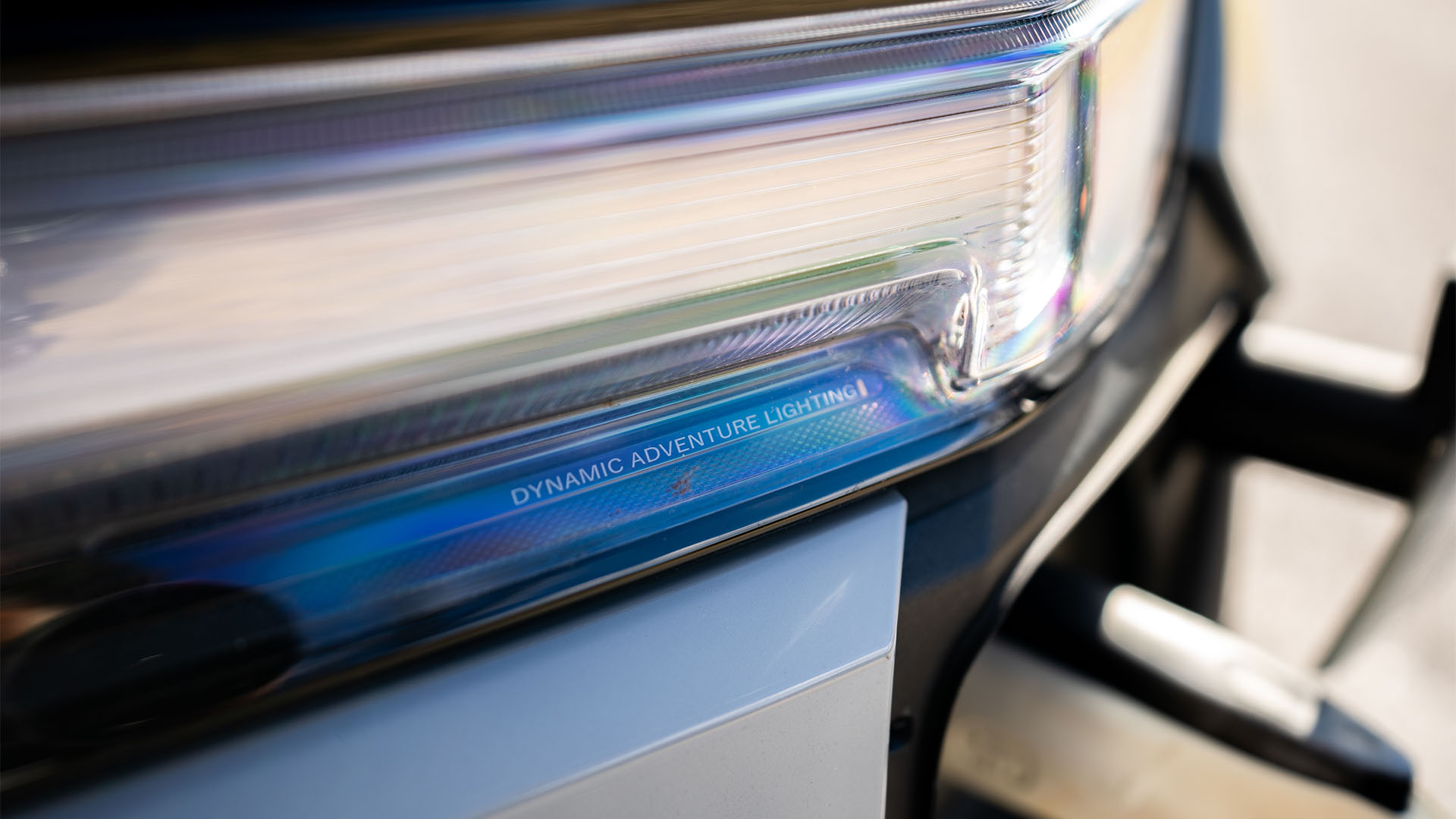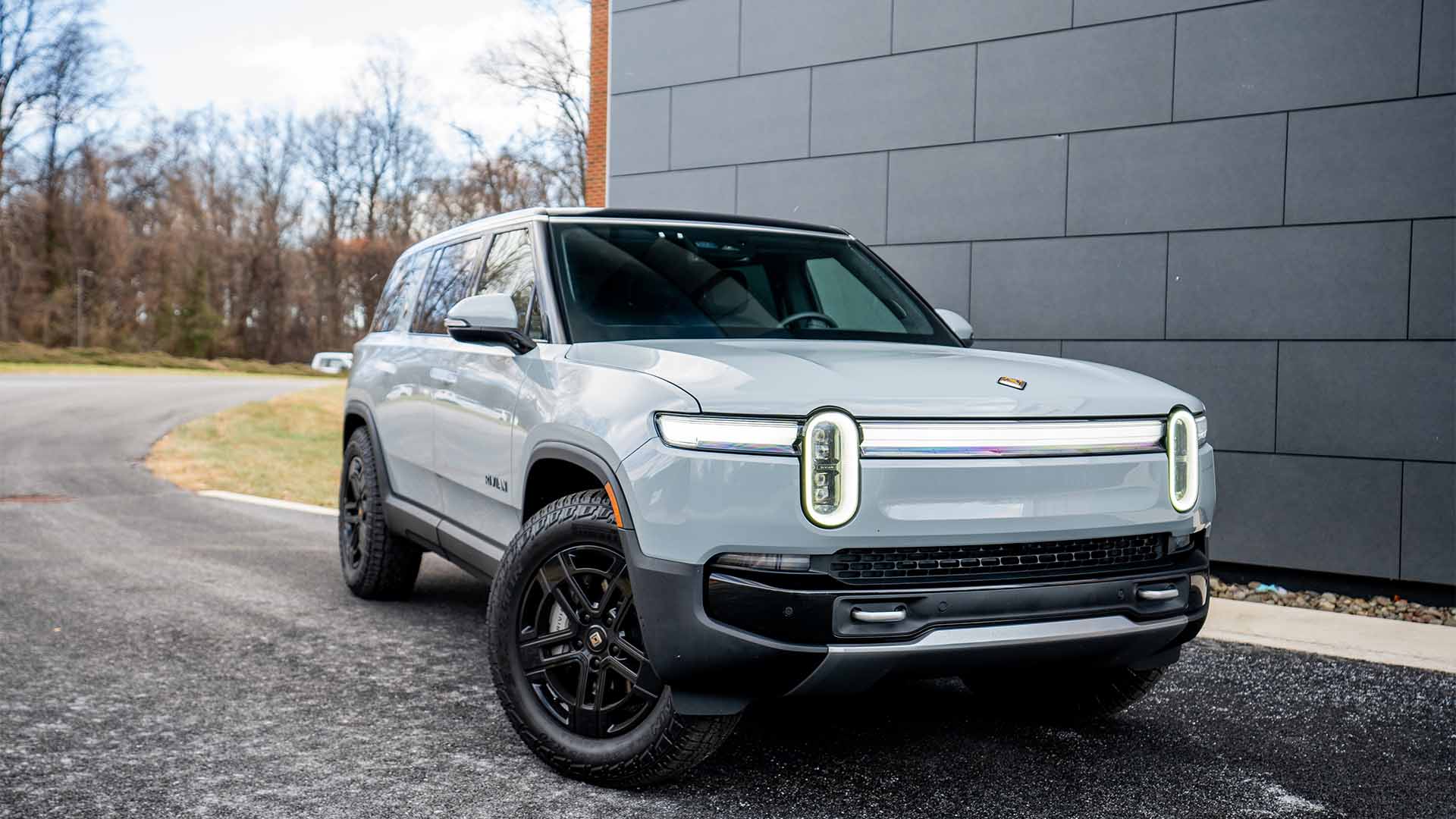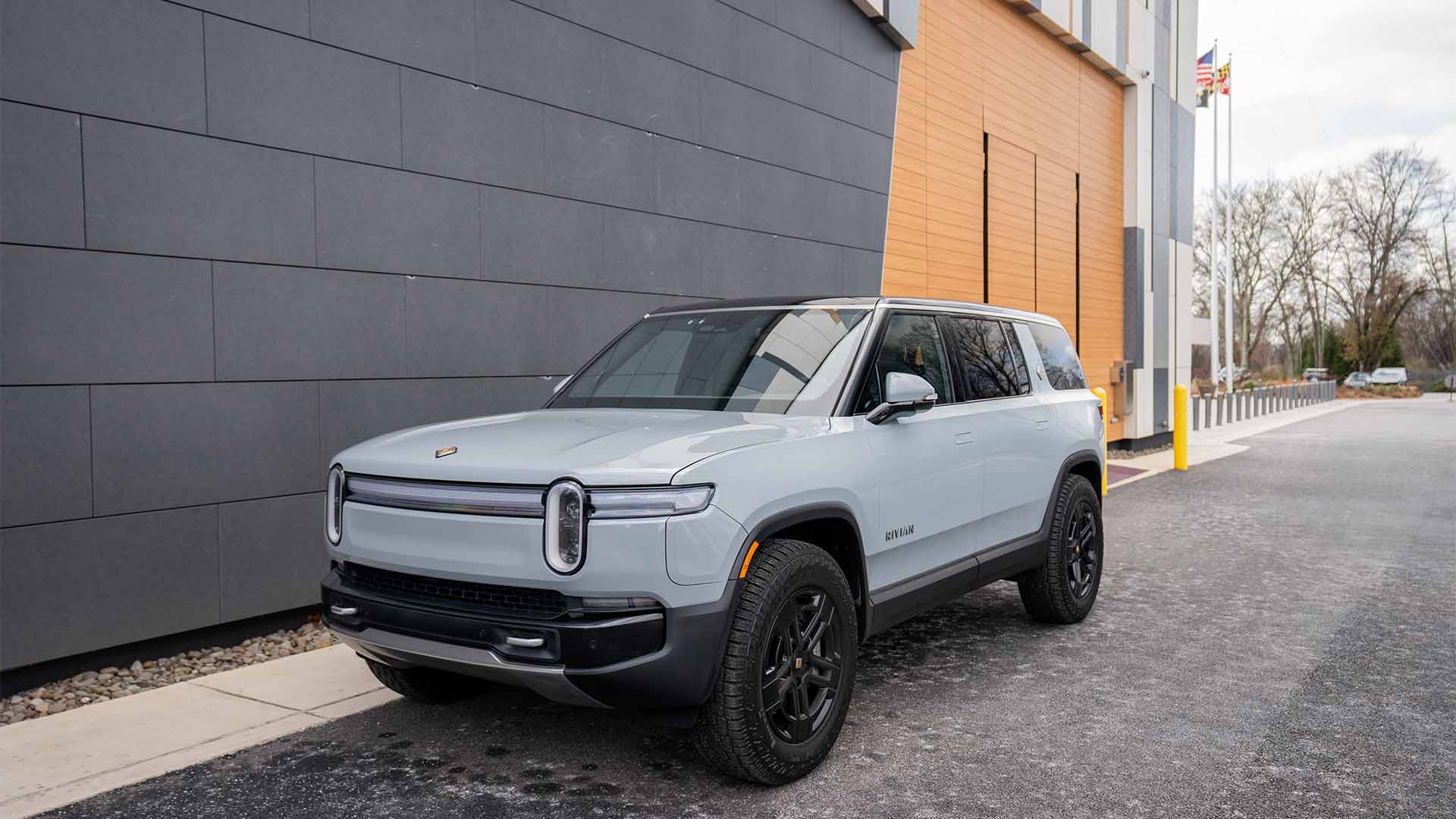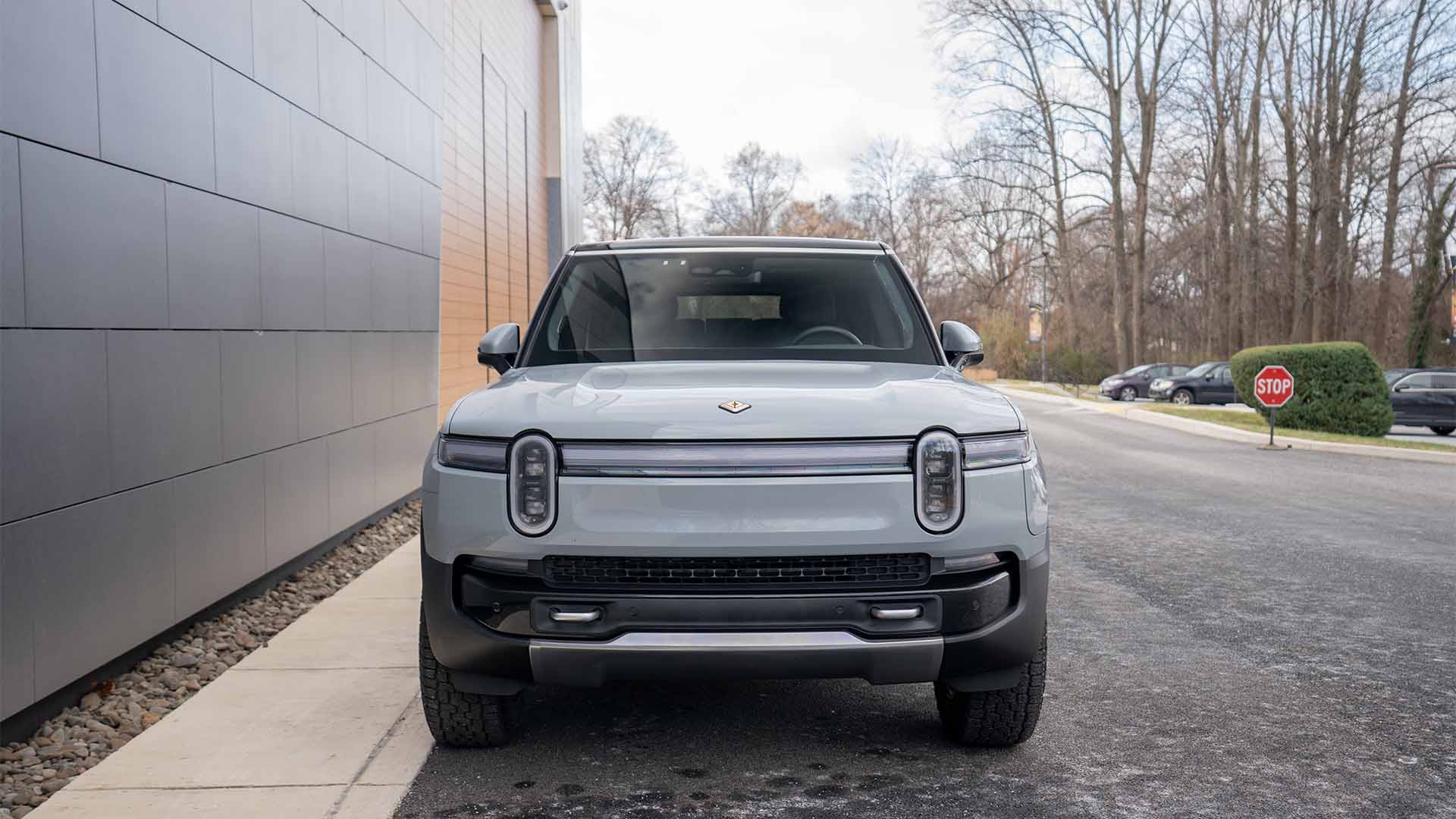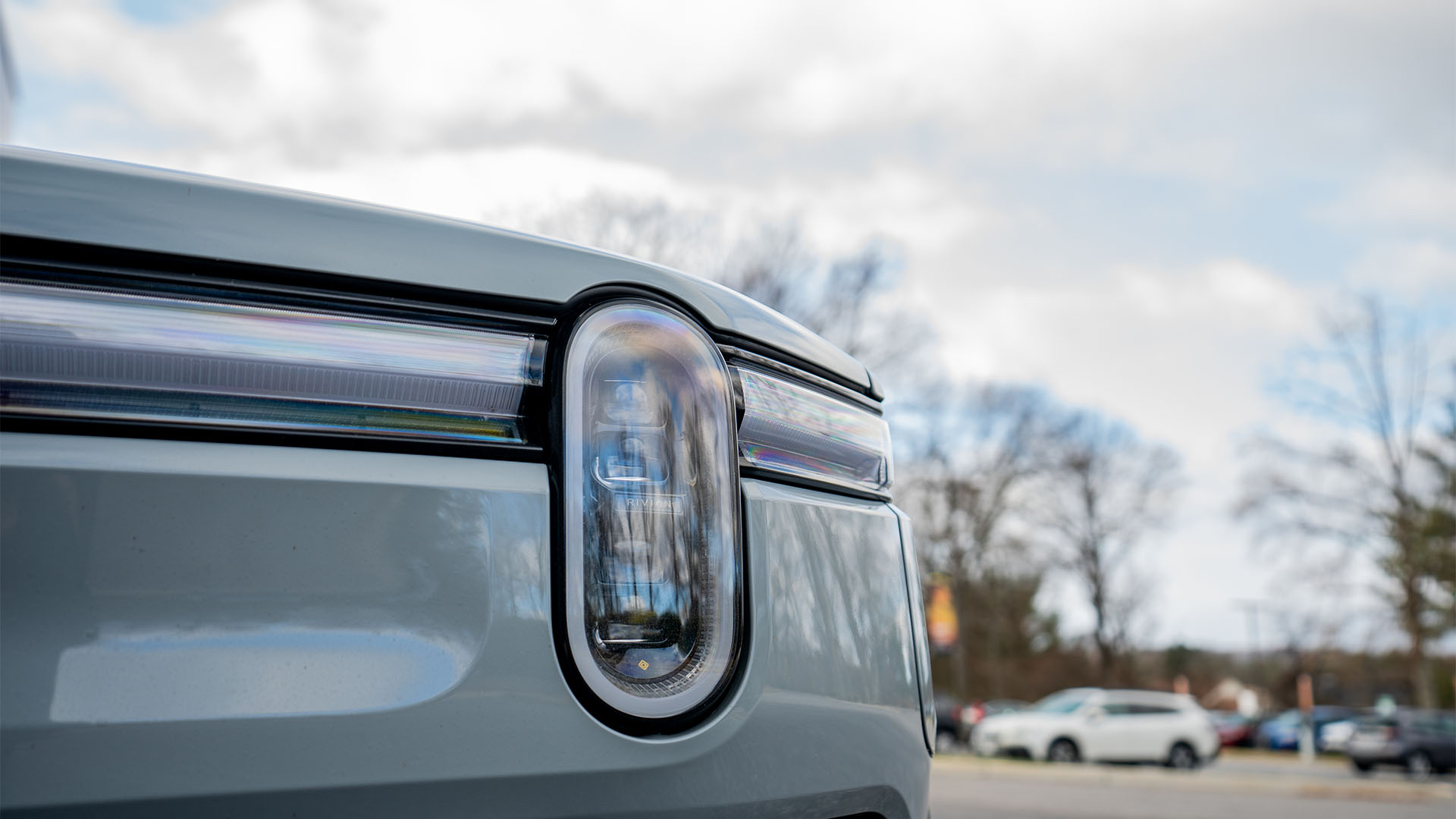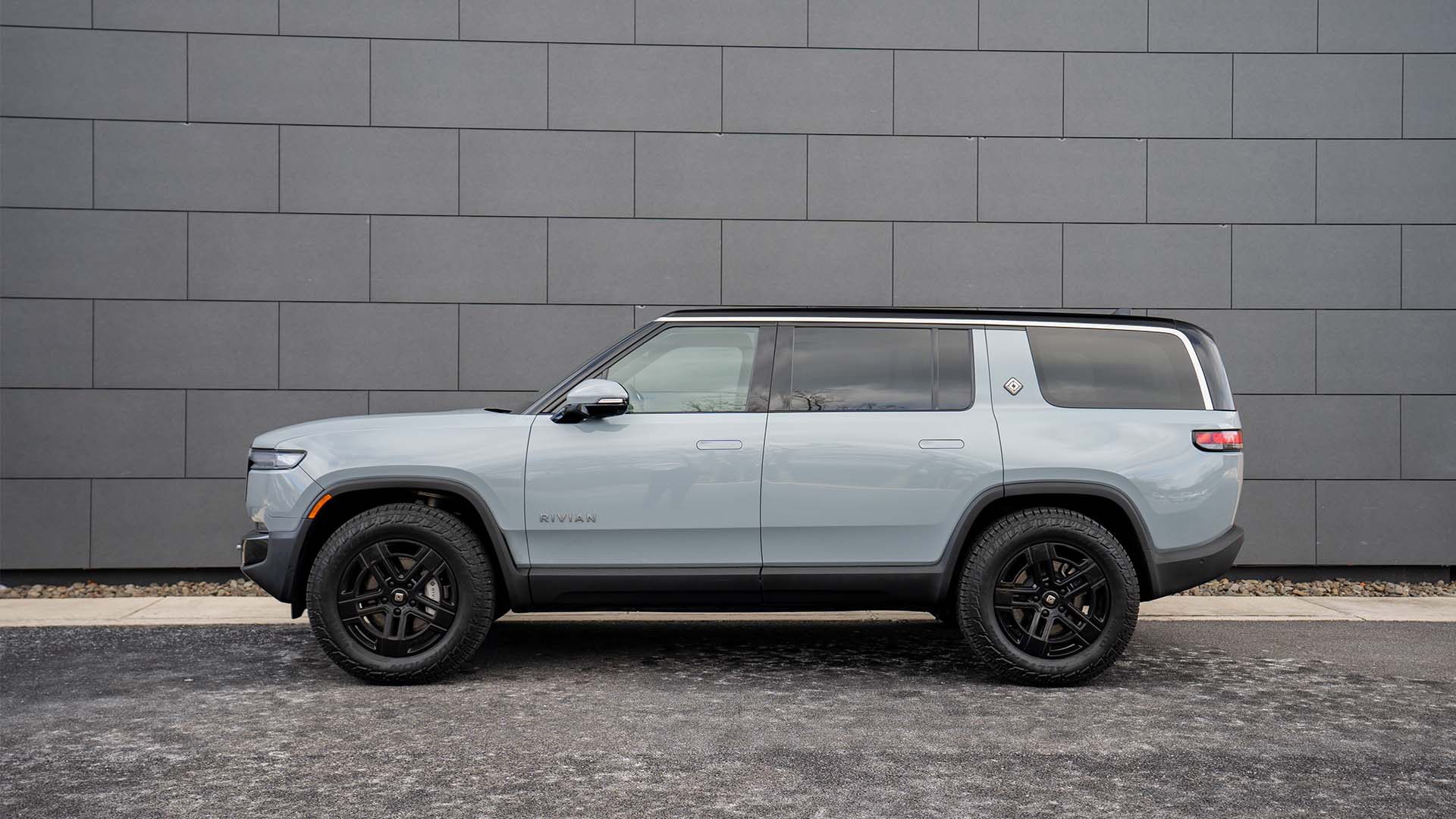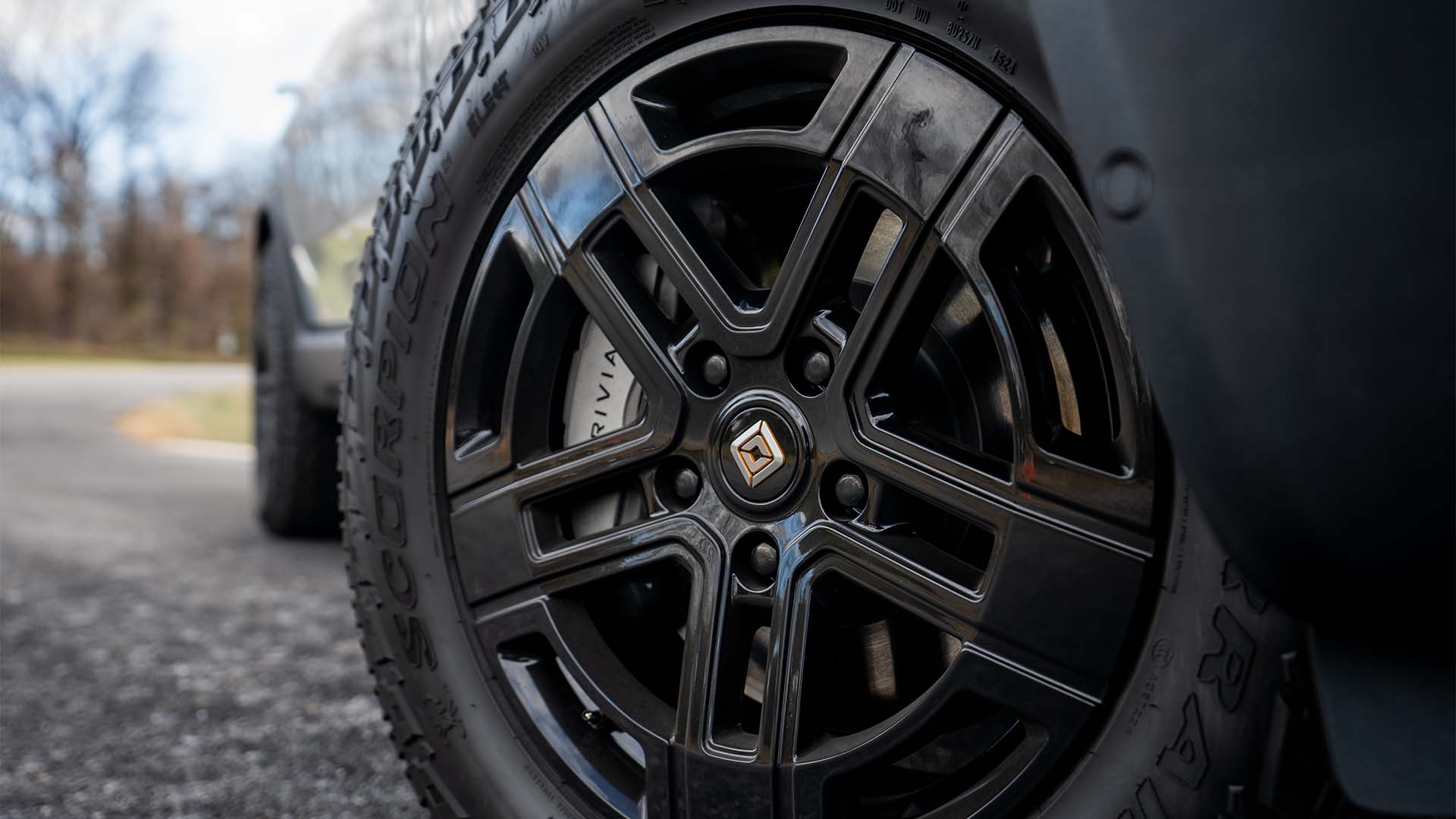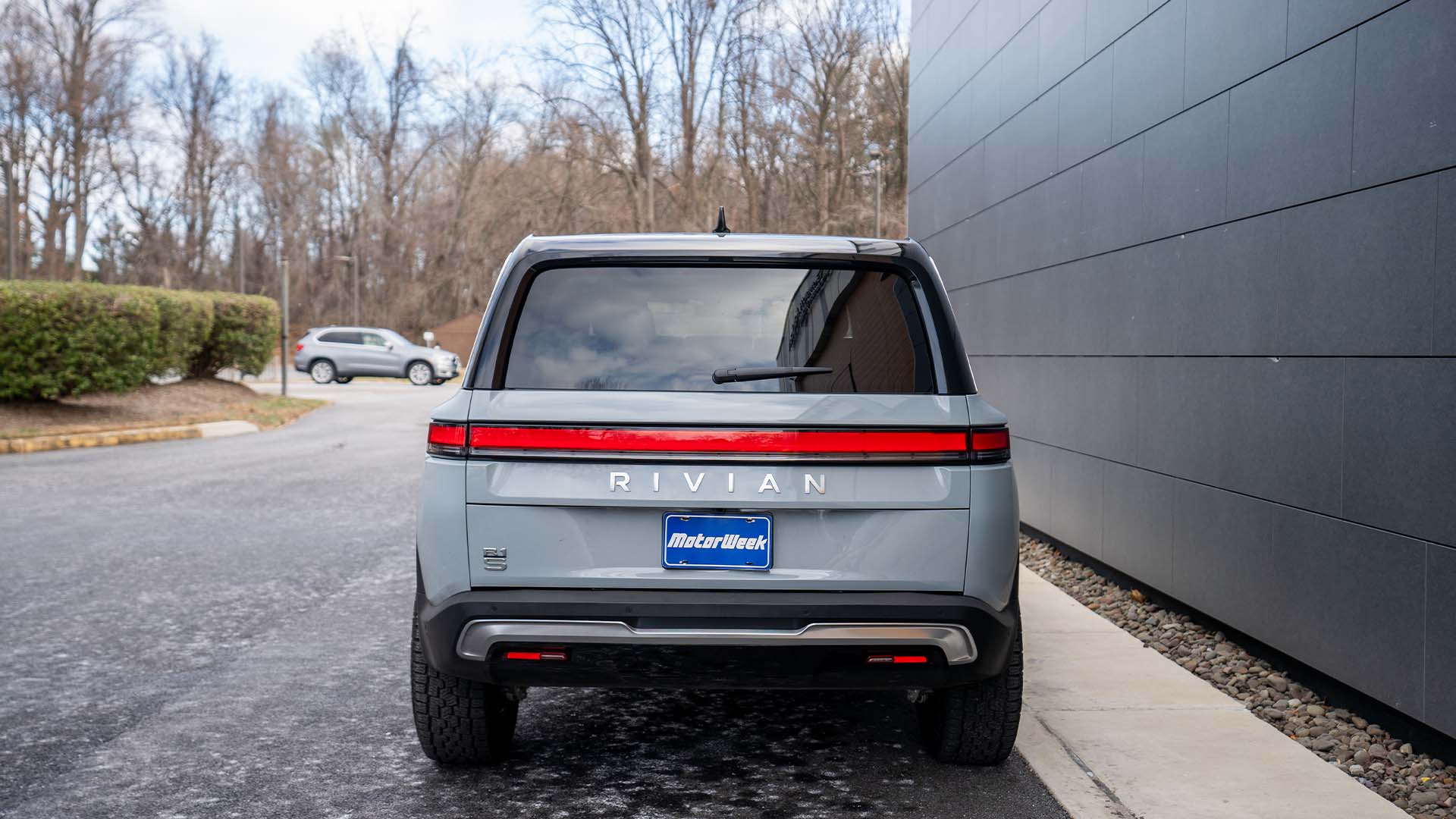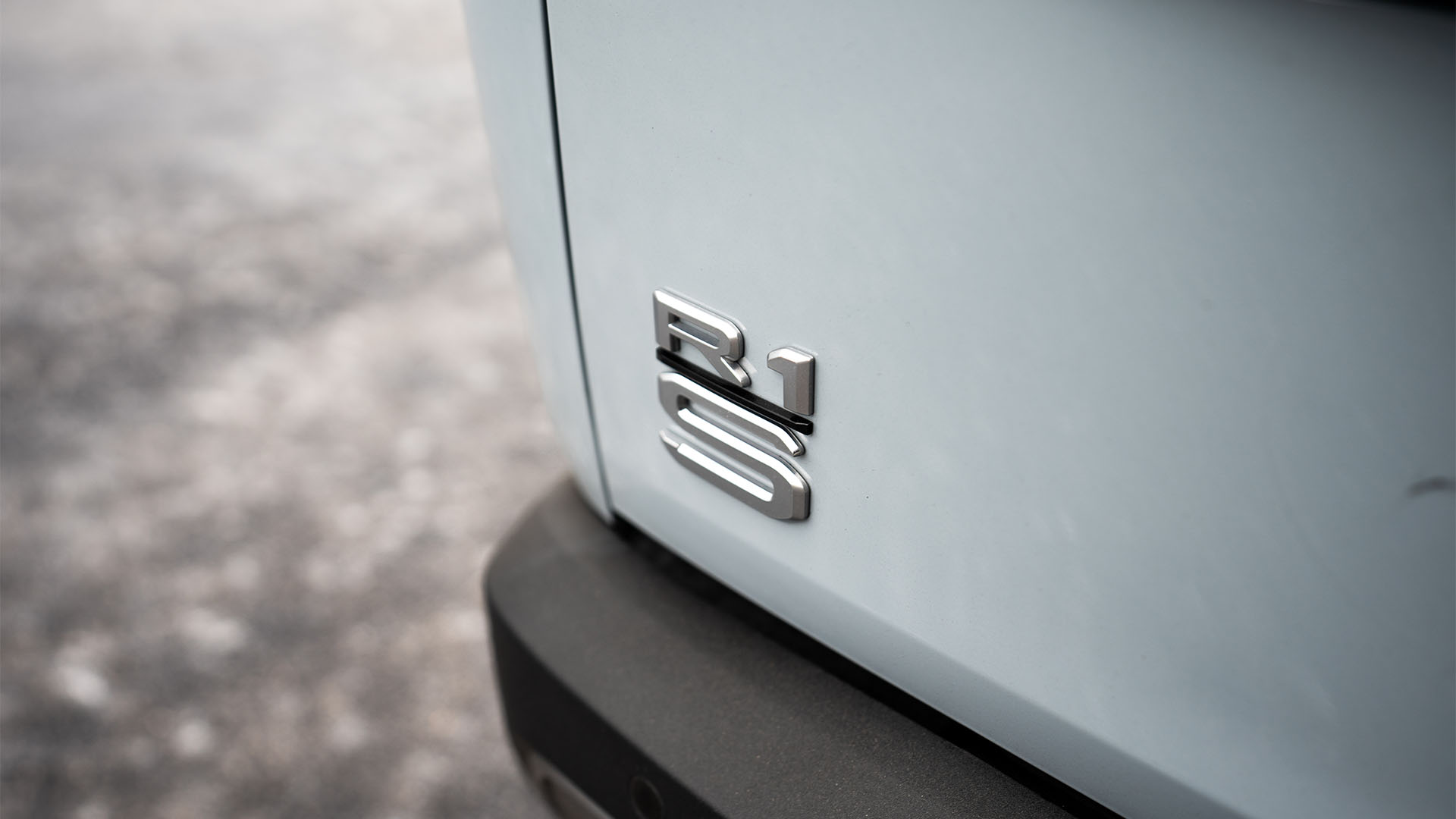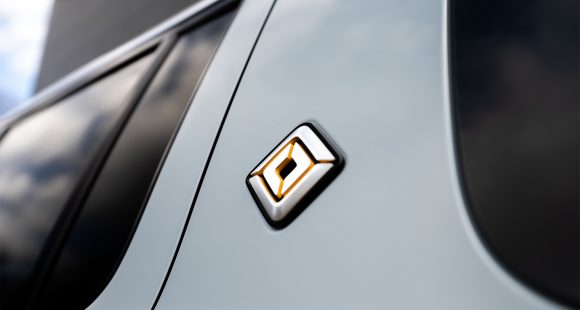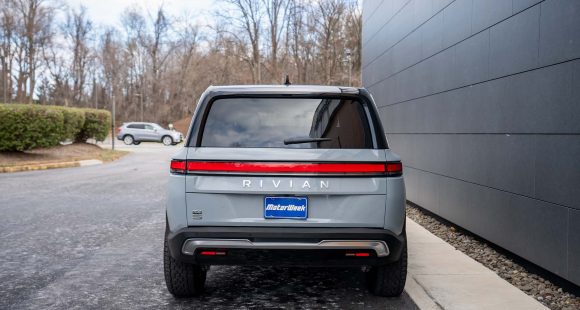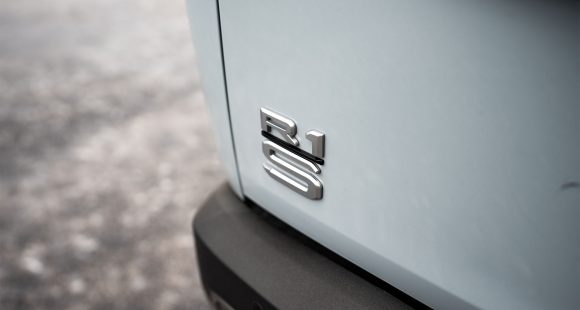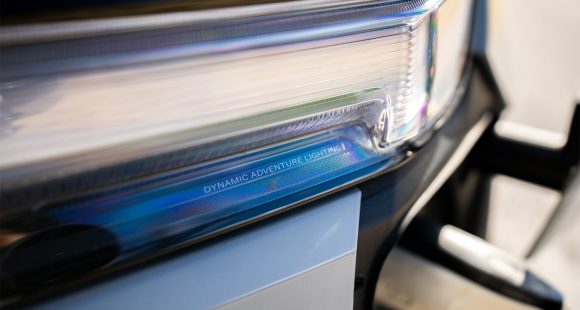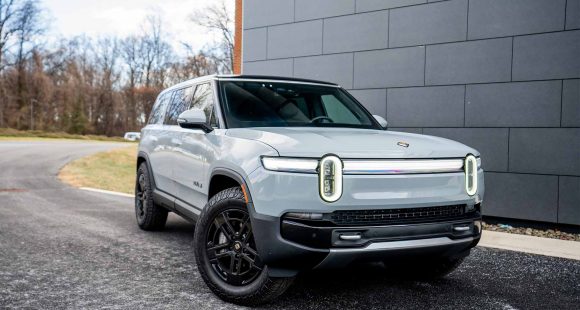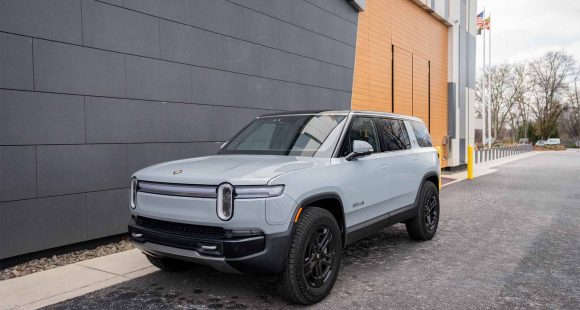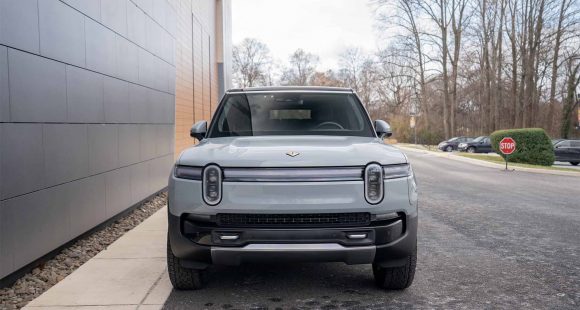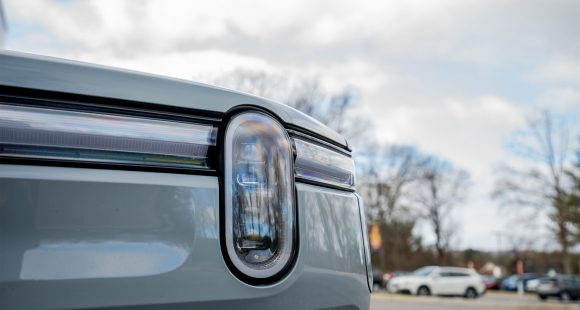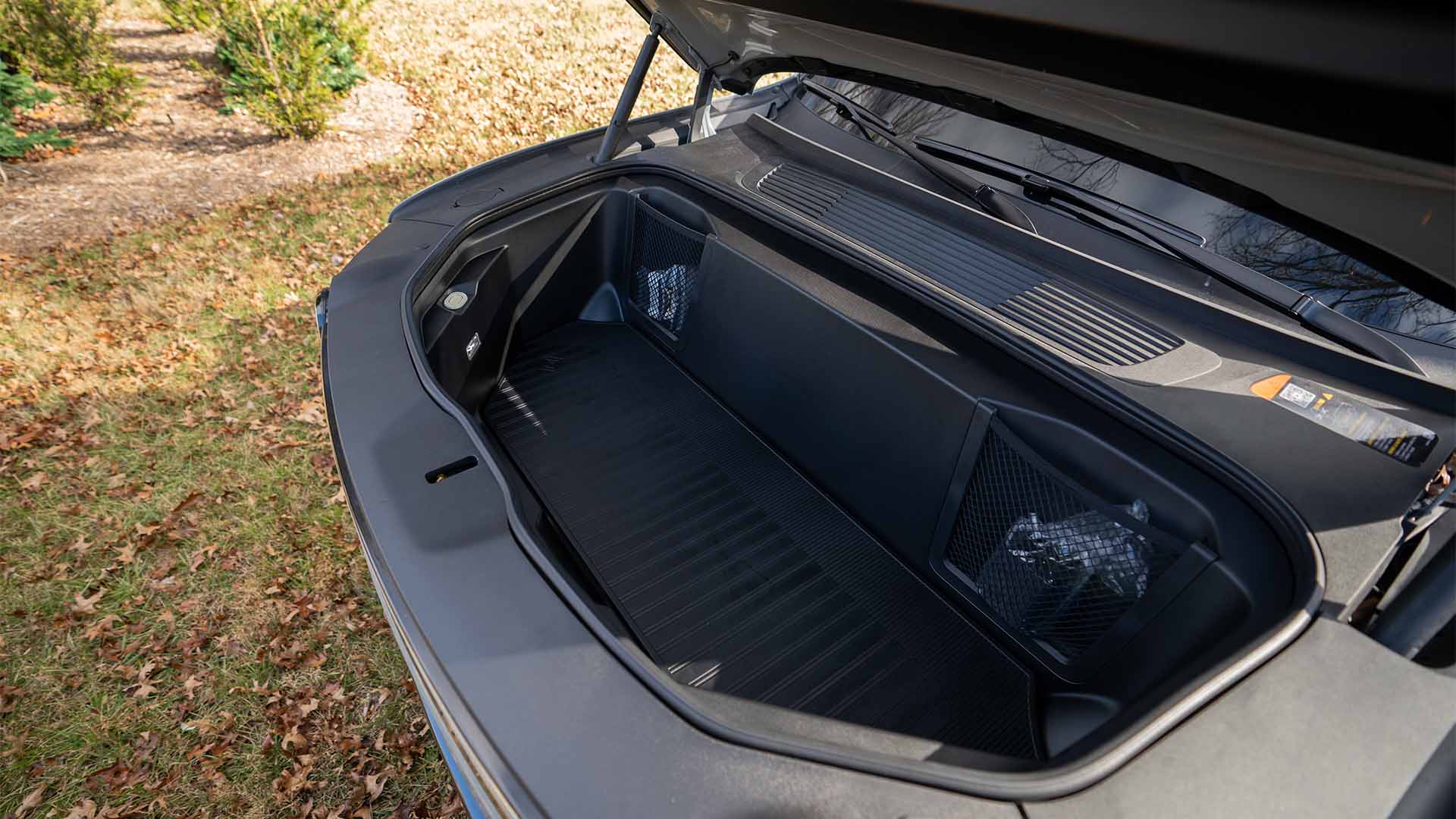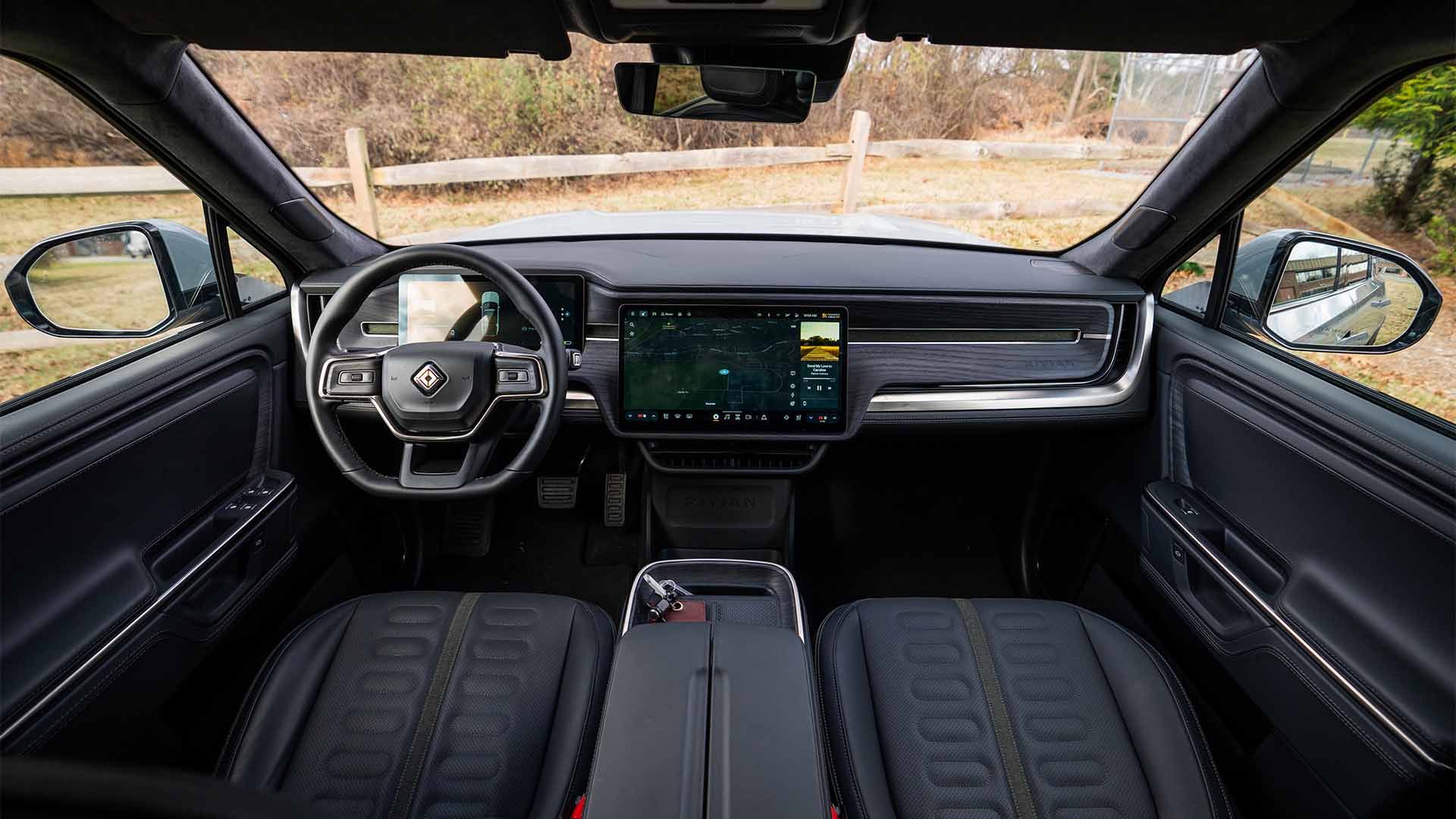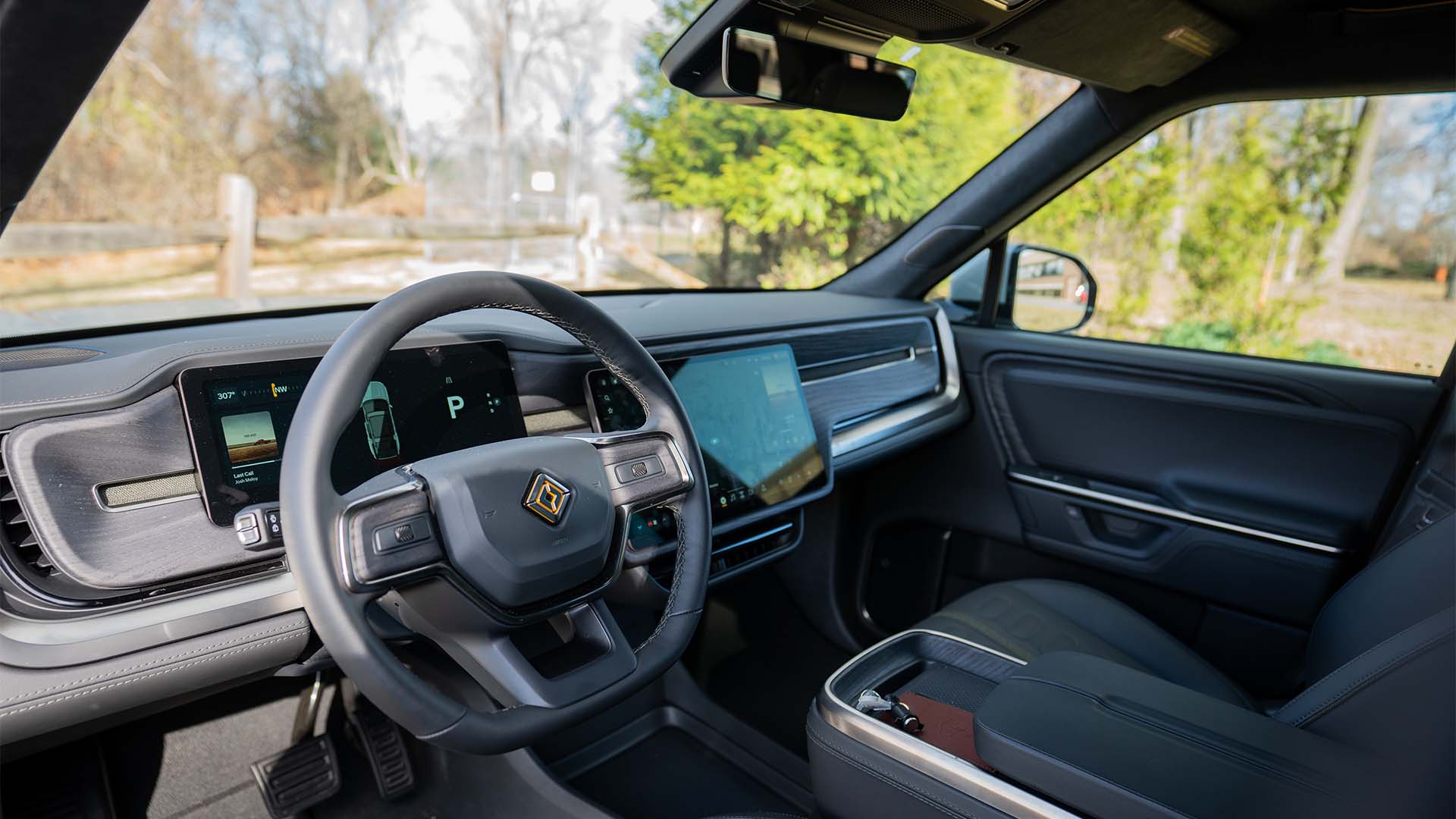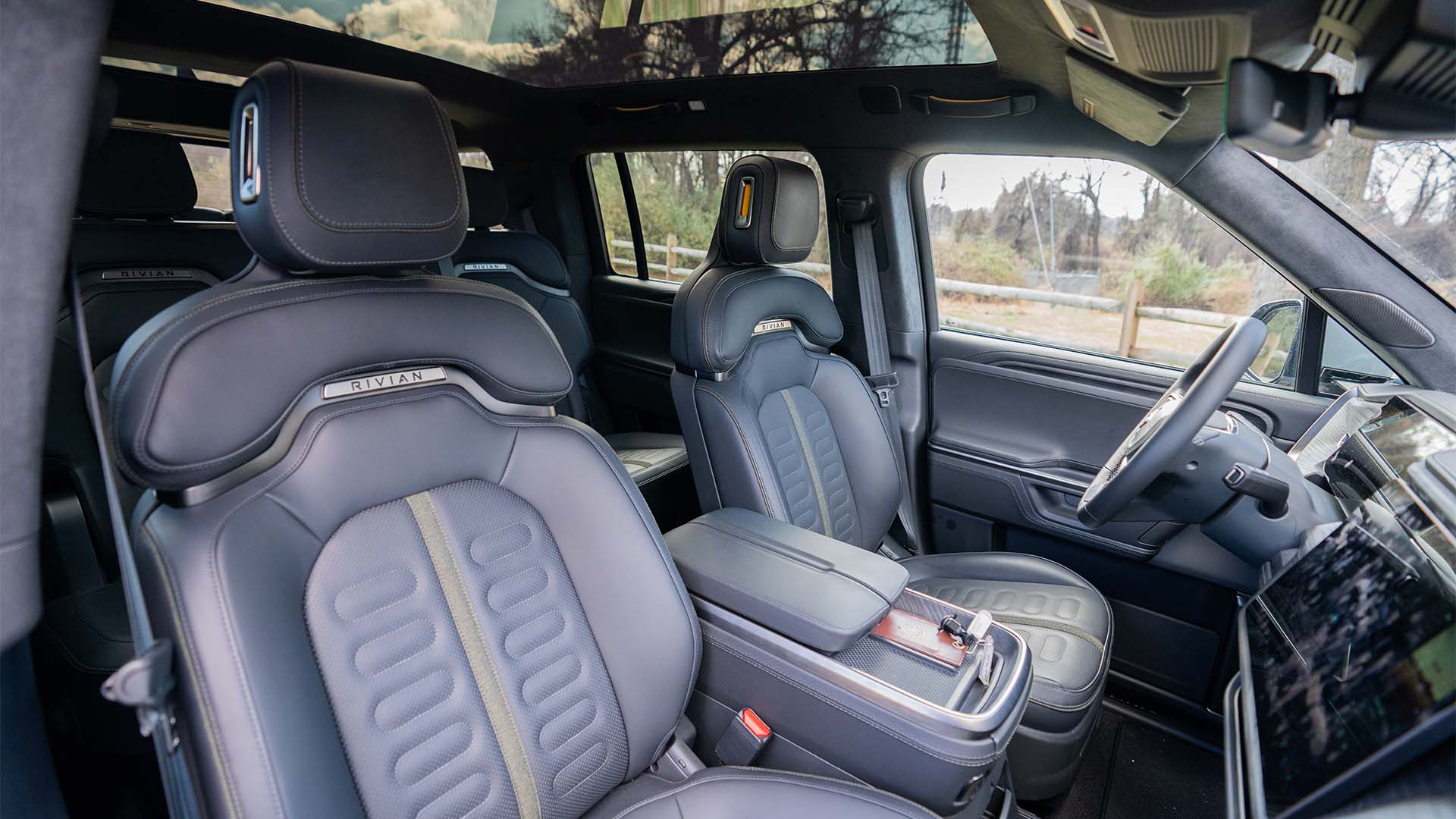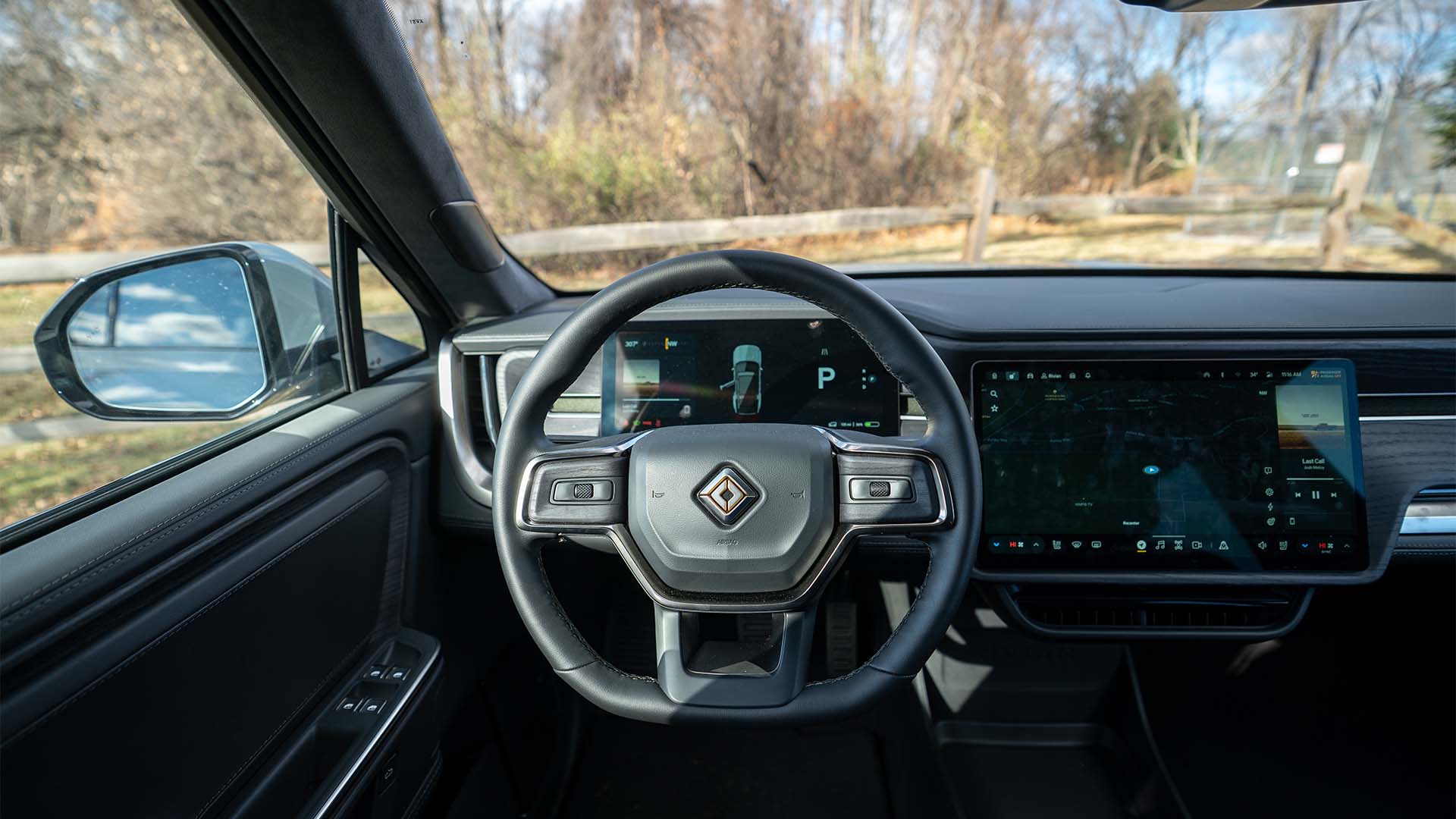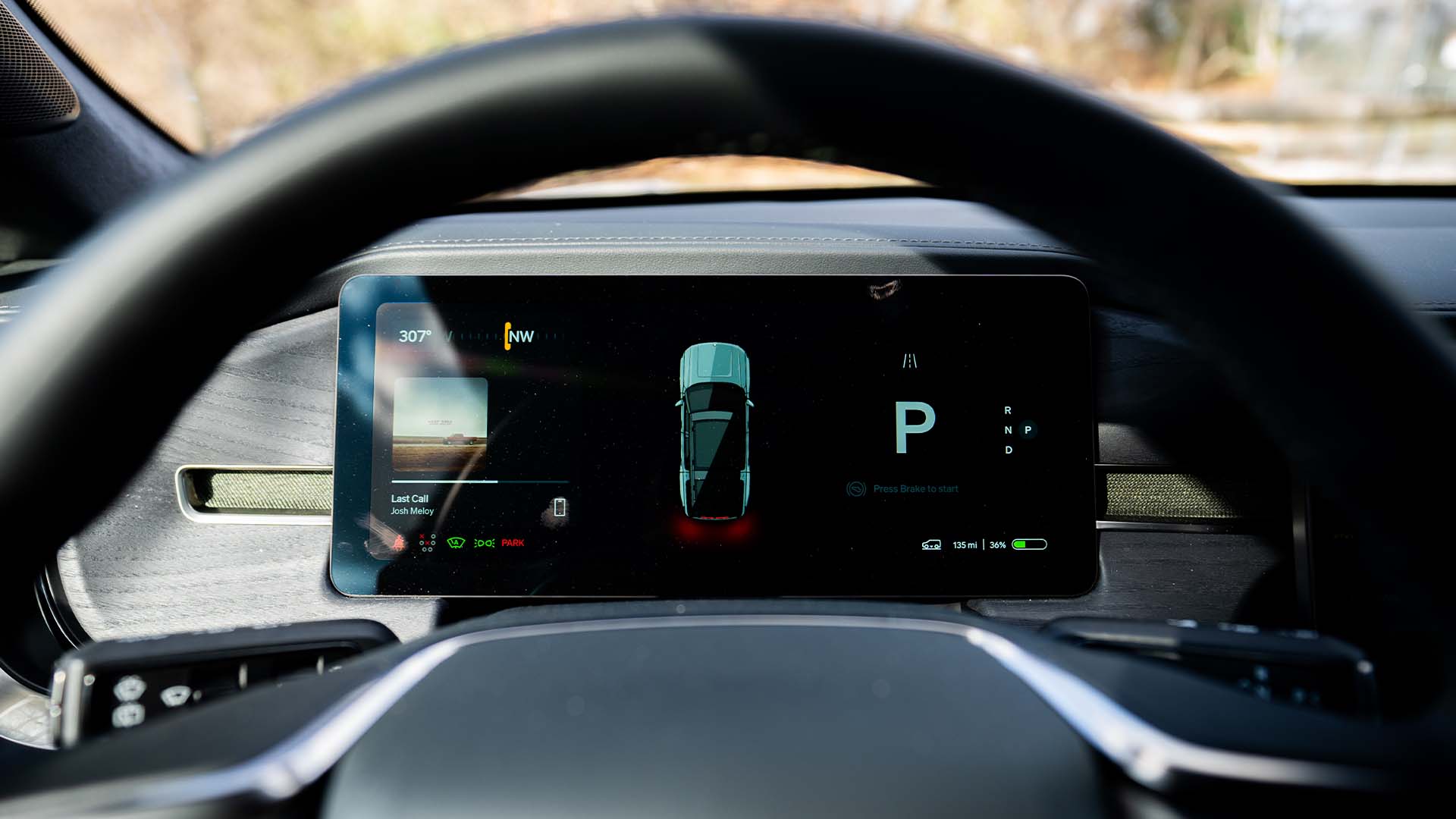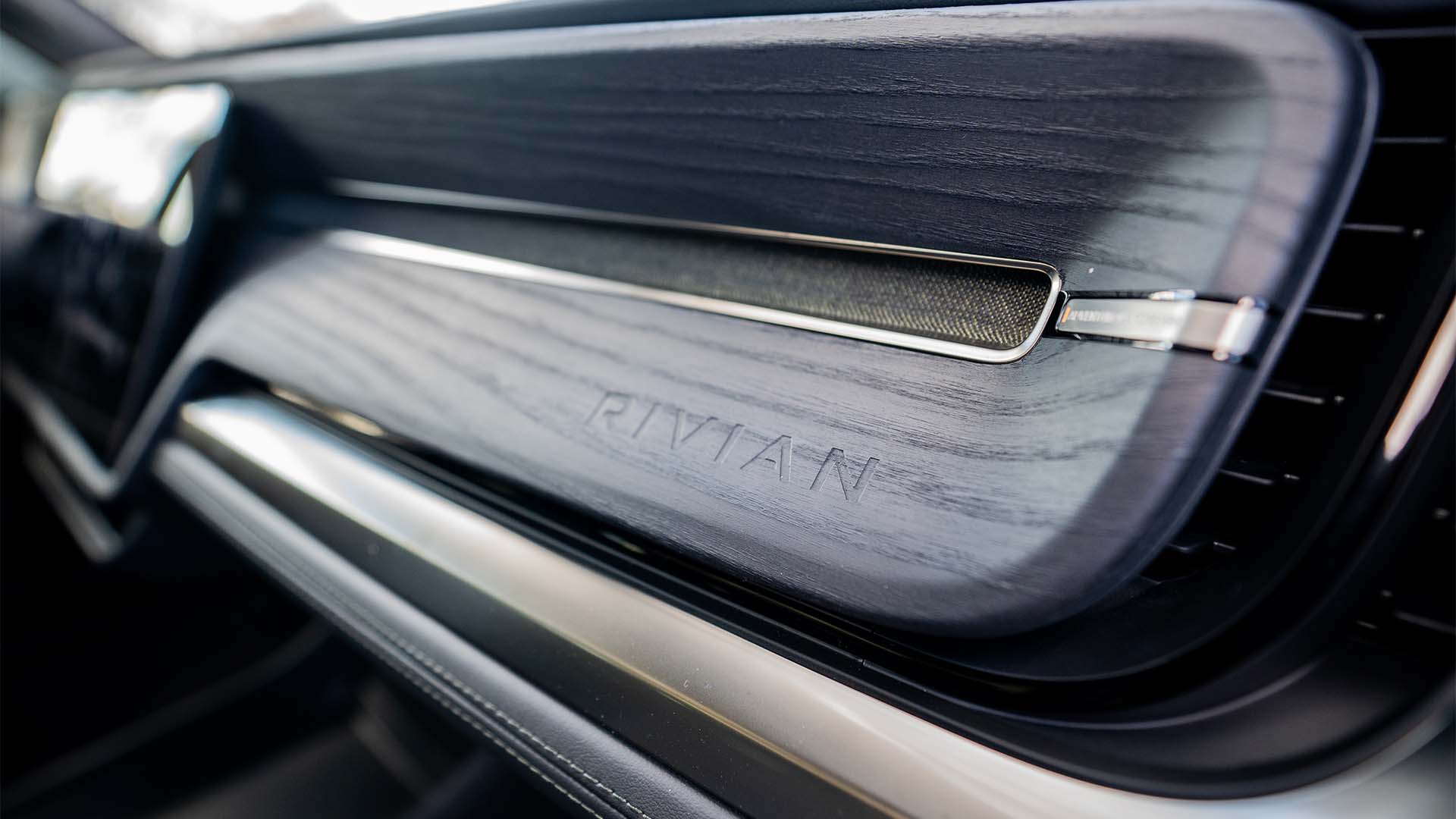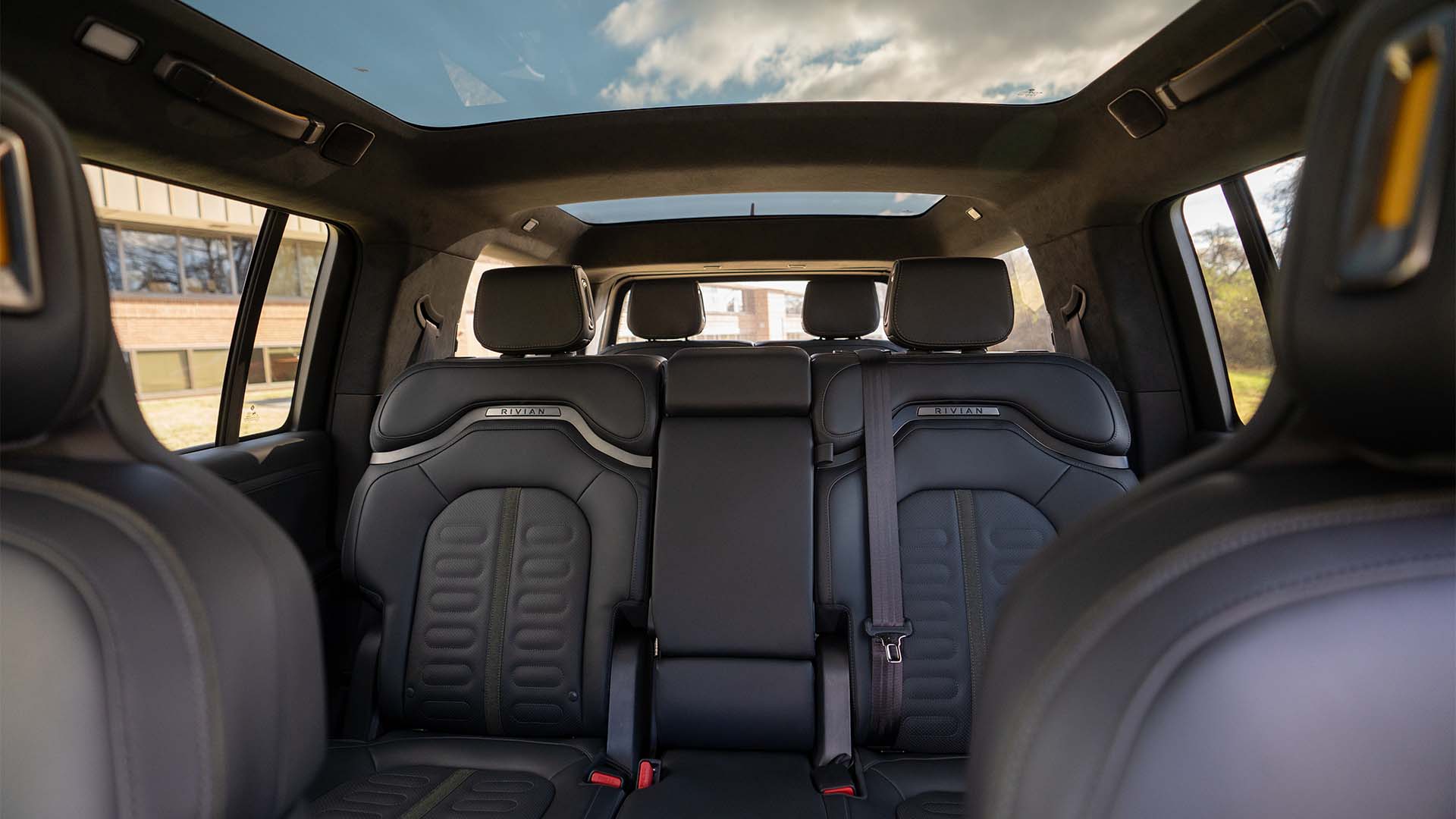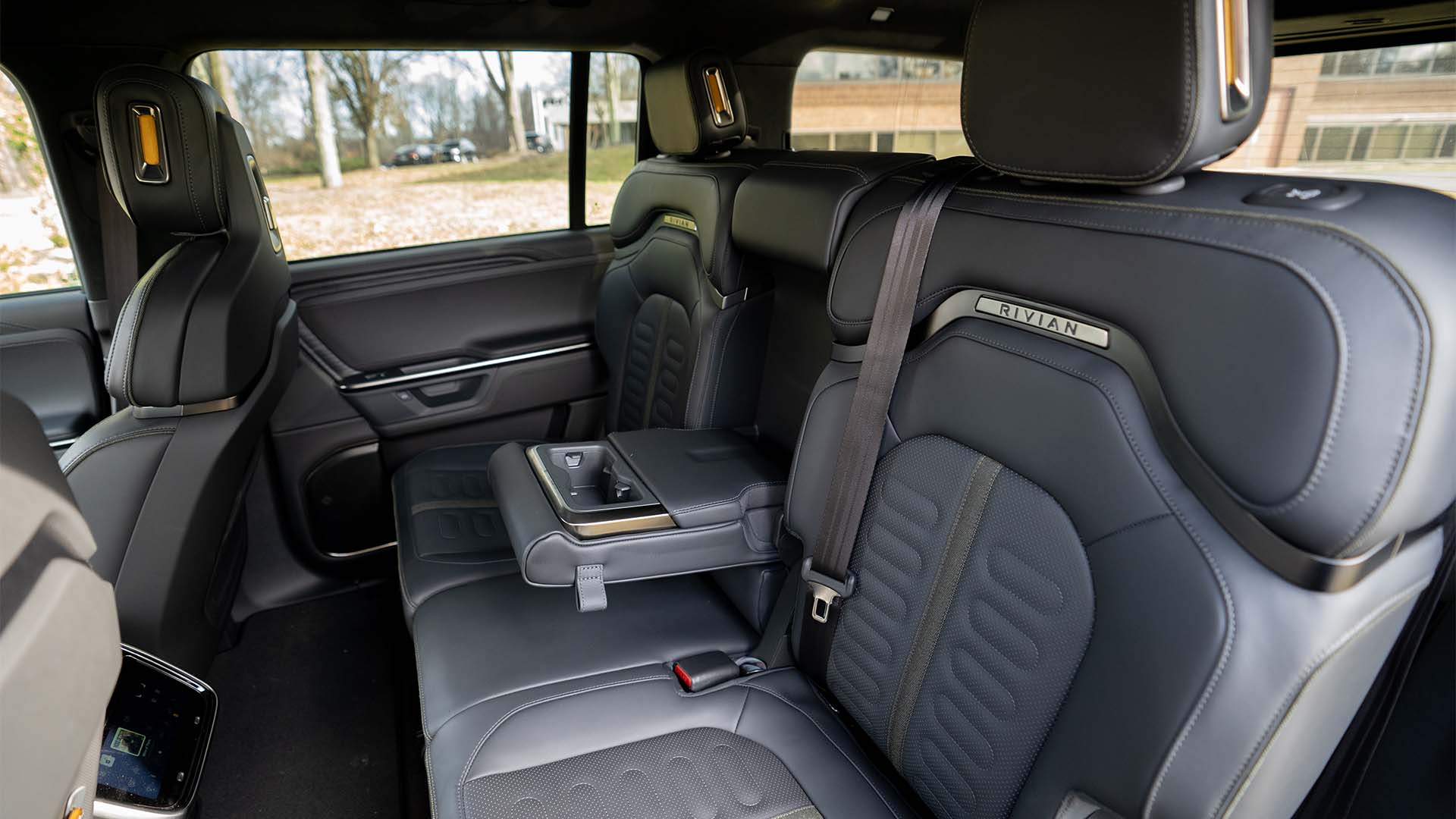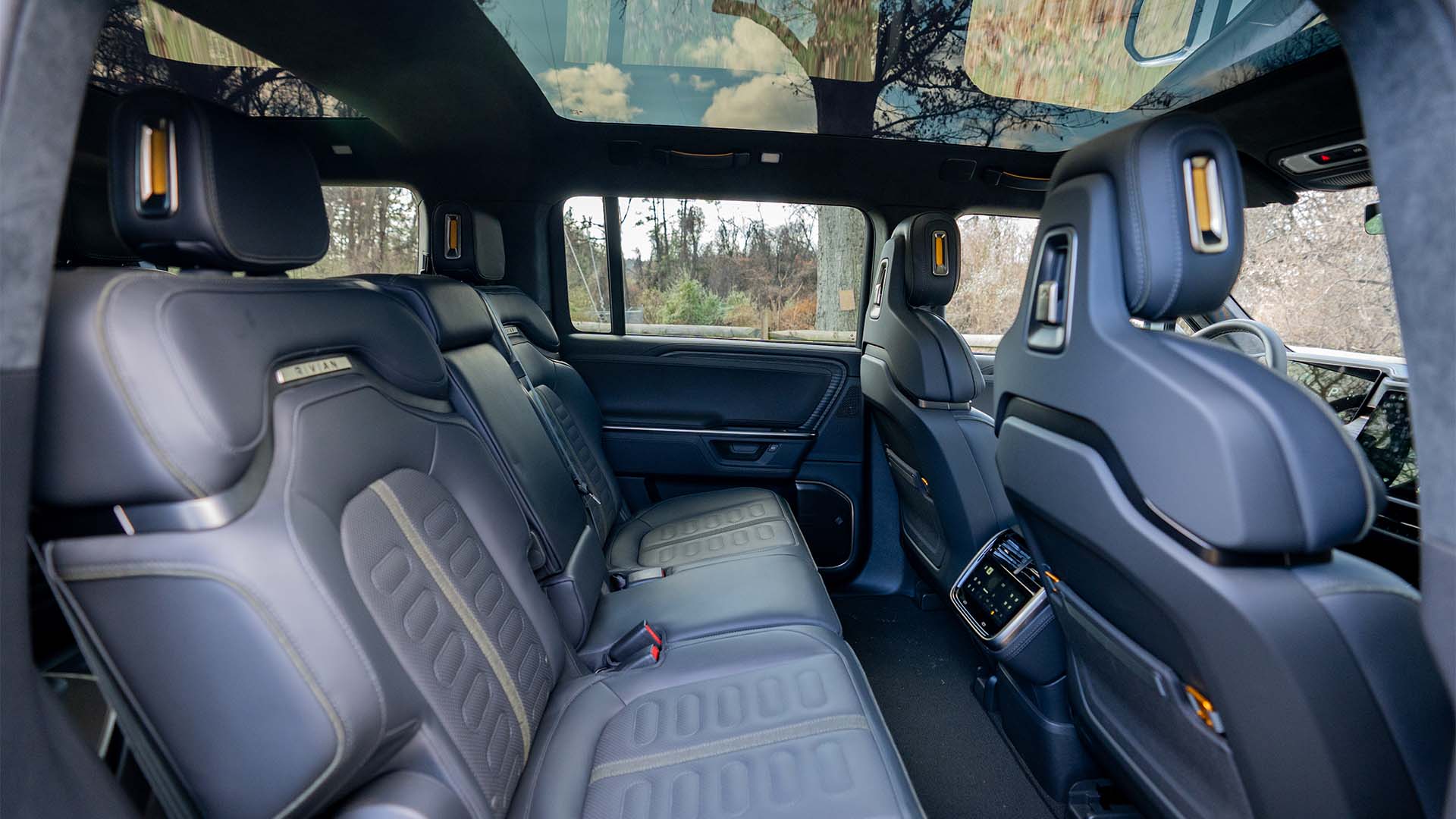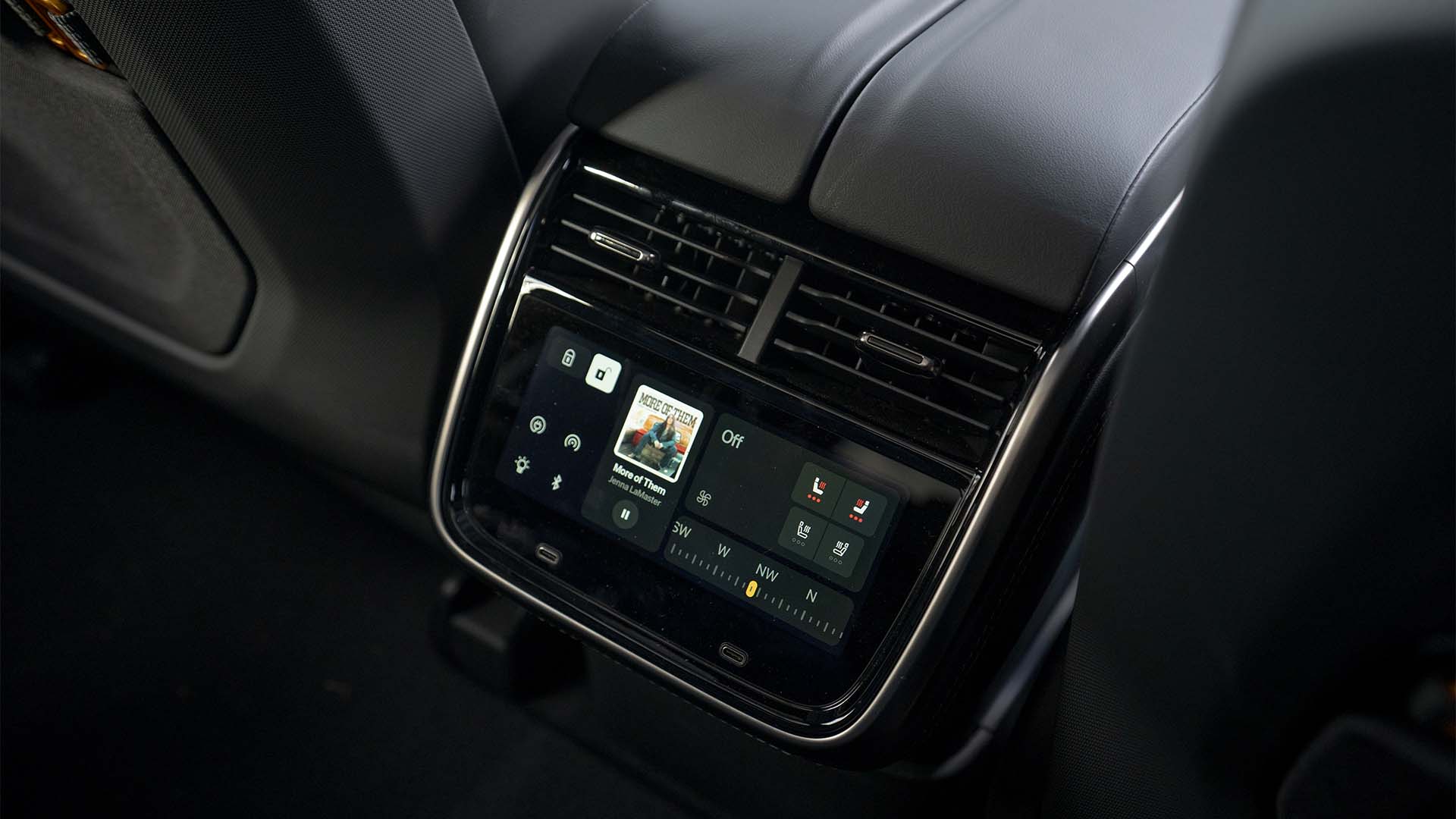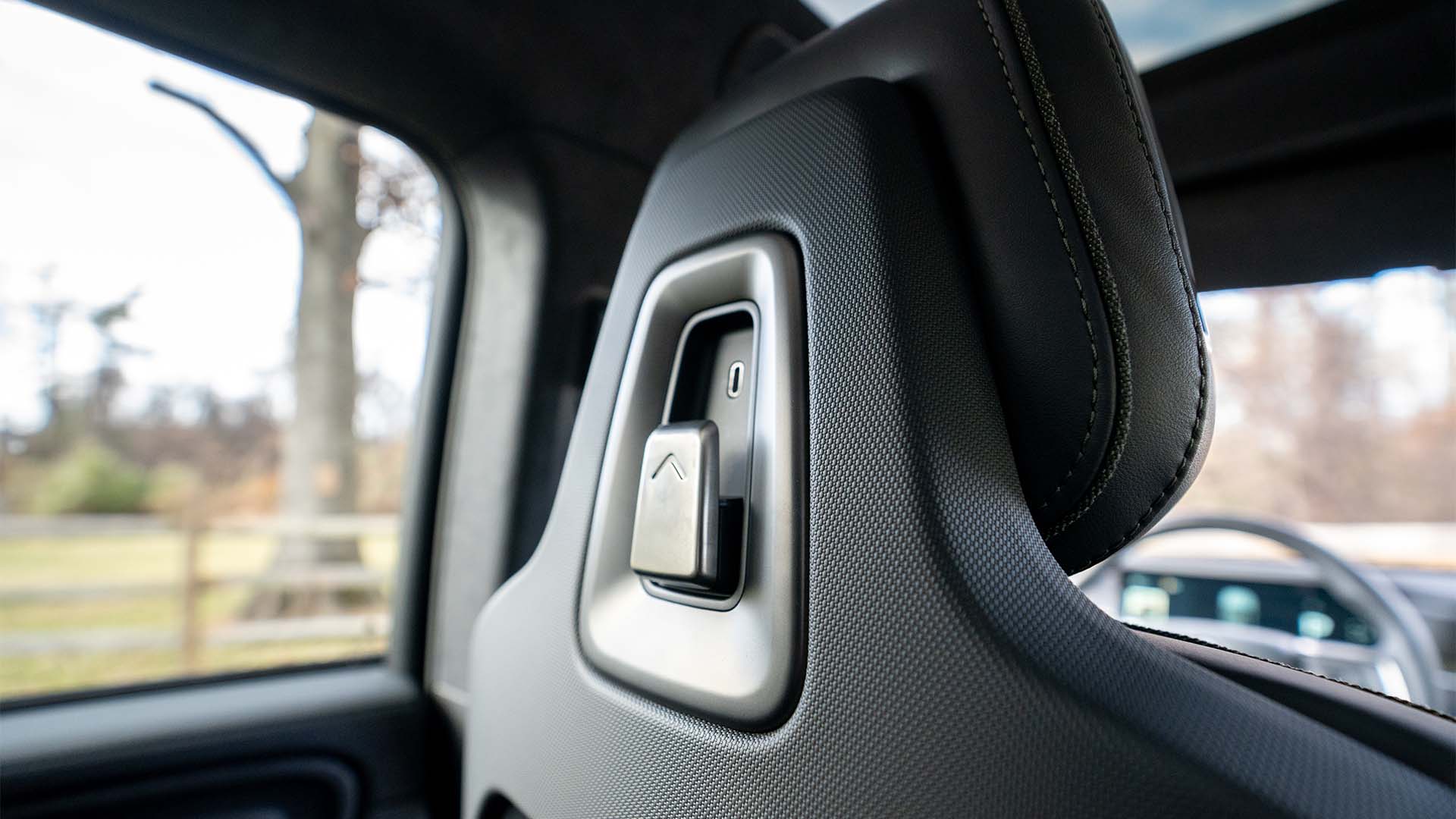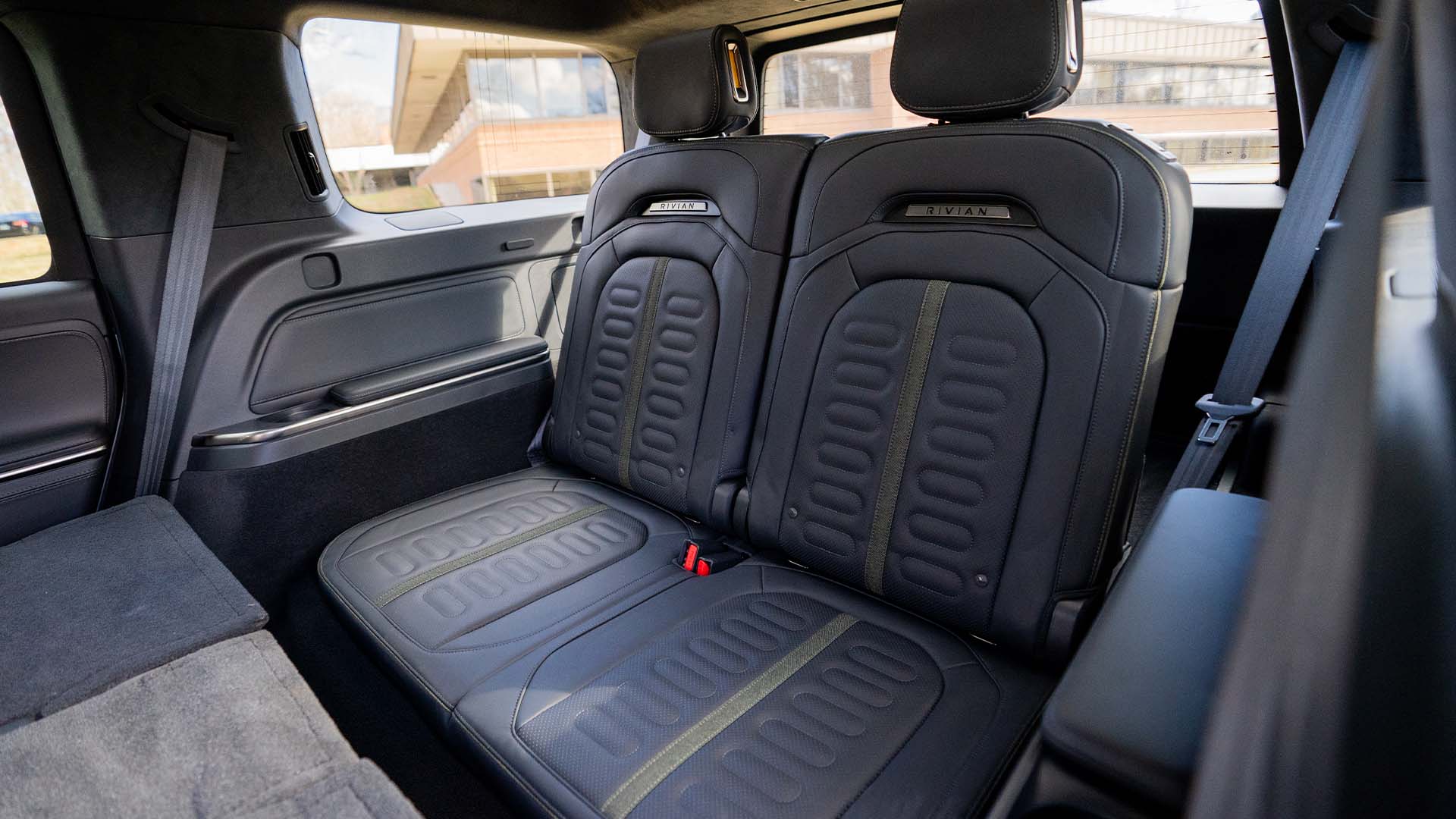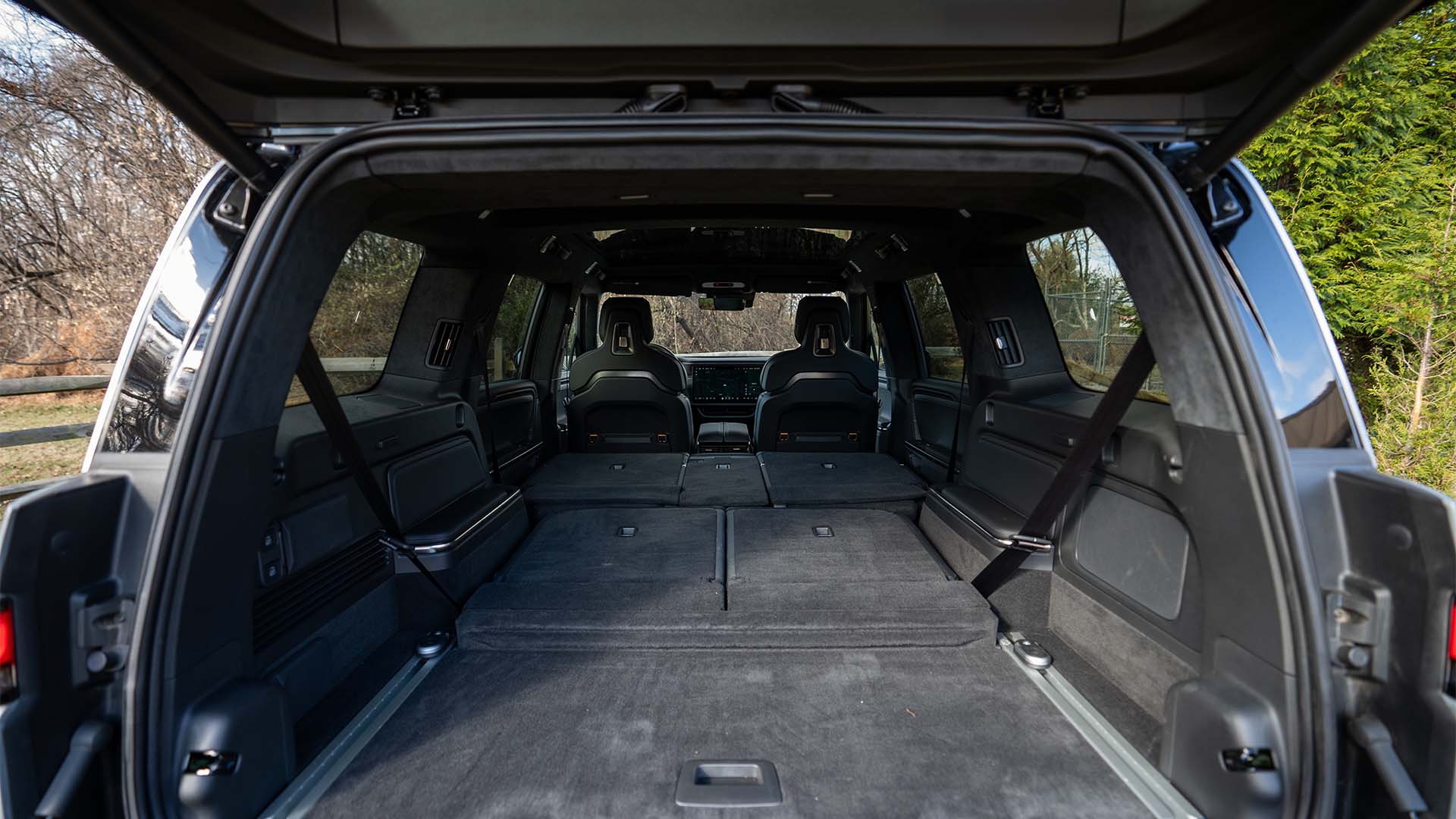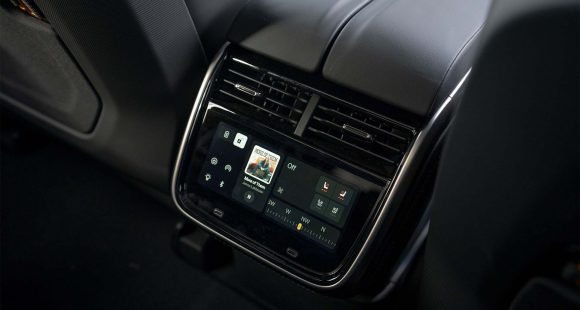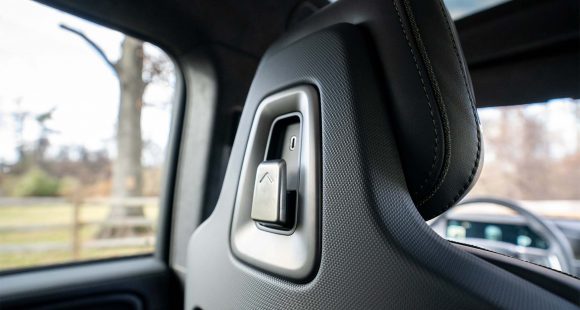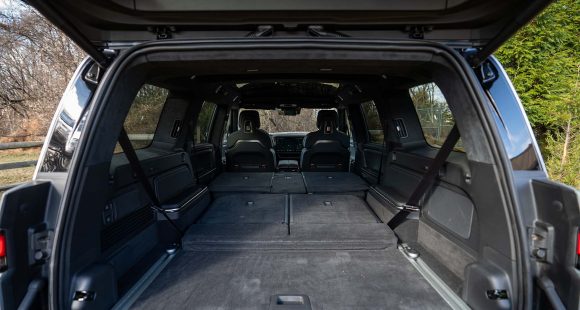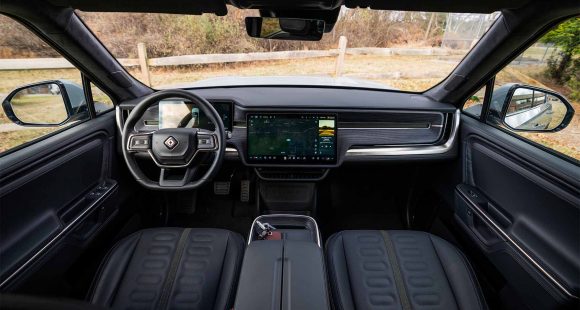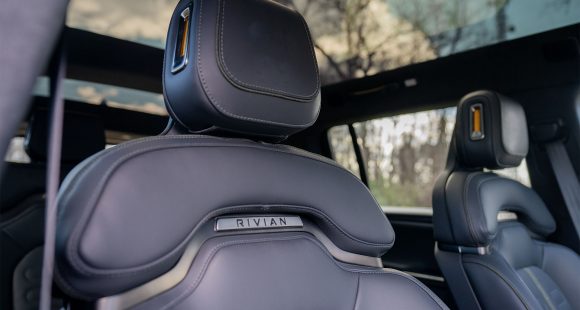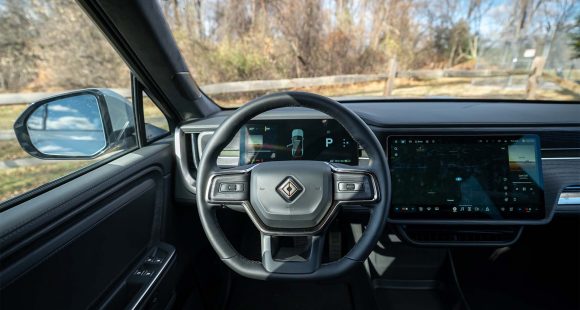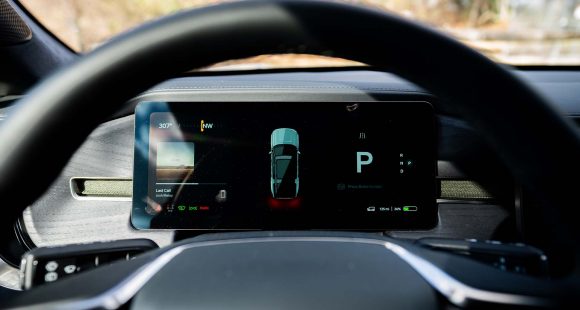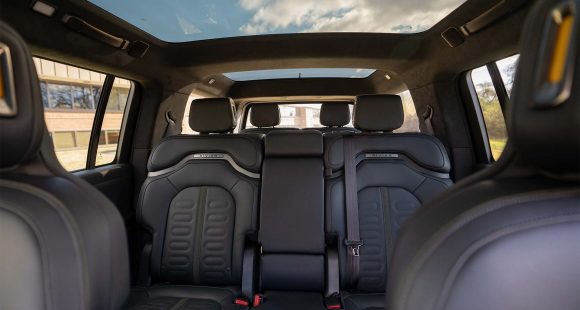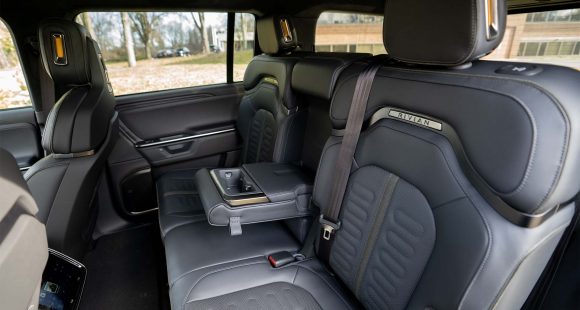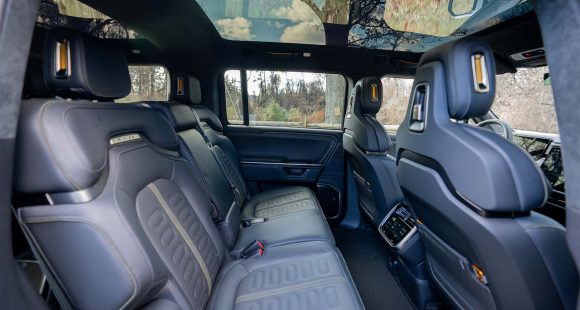2015 Bentley Flying Spur V8
Last year, the Bentley Flying Spur dropped Continental from its name, but it lost nothing when it came to showcasing British luxury performance motoring at its best. Well, this year it loses something else…4-cylinders from its signature W12 engine. So, let’s see if less turns out to be more.
Yes folks, as much as we hate to admit it, sometimes you can have too much of a good thing. That’s where this 2015 Bentley Flying Spur V8 comes in.
For some, 12-cylinders pumping in harmony to produce glorious amounts of power is just more than they can handle or perhaps wish to pay for.
But this is no lightweight V8 we’re talking about here. It’s Audi’s aluminum 4.0-liter twin-turbo unit that, after some unique Bentley tweaks, performs some internal combustion magic of its own, pulling 500-horsepower and 487 lb-ft. of torque. That may be over 100-horsepower less than the W12, but with 100-pounds of weight also removed from the front end, it should translate to a more enjoyable experience at the track.
So we “suited up” in proper Bentley fashion and made haste to our test facility. And unless you’ve recently driven the W12 Flying Spur, you’d be hard pressed to notice a difference in acceleration, as this thing just flat takes off. There’s gobs of power off the line, and rear-biased all-wheel-drive to apply it.
 Power continues to build in a very linear fashion, and 60 miles-per-hour arrives in just 4.6-seconds. That’s only a tenth off our time in the W12. The 8-speed automatic transmission provided smooth and fast shifts, and in 12.9-seconds, we were at the end of the ¼-mile with the needle pointing at 111 on the speedo. So, unless you absolutely will settle for nothing but the best or are always in a real hurry, there’s not much need for the 12.
Power continues to build in a very linear fashion, and 60 miles-per-hour arrives in just 4.6-seconds. That’s only a tenth off our time in the W12. The 8-speed automatic transmission provided smooth and fast shifts, and in 12.9-seconds, we were at the end of the ¼-mile with the needle pointing at 111 on the speedo. So, unless you absolutely will settle for nothing but the best or are always in a real hurry, there’s not much need for the 12.
At 5,300-pounds plus, there’s still a lot of weight to hustle through the cones. But this Flying Spur does so with surprising agility, though you want to make sure suspension is at its firmest setting to keep body roll at a minimum. You can find both under and over steer should you go looking, but initiating either requires some very aggressive inputs with the wheel or with the throttle.
Even more amazingly, bringing this 2½-ton dreamliner to a halt from 60 happens in just 107-feet, with smooth and steady stops that belie the frictional ferociousness that is transpiring behind this car’s 21-inch painted alloys.
Though technically no longer part of the Continental family, the Flying Spur sees similar exterior embellishments to last year’s Continental GT Coupe V8. That means it’ll take a keen or perhaps distinguished eye to spot the dark finish to the grilles, red background of the flying B logo, and figure-8 shaped exhaust finishers.
 There’s always lots to love when you’re talking about Bentley interiors. Now, we can’t say this Newmark tan motif would be our first choice in color as we prefer to leave the saddle-brown theme to our pickups, but material quality and finish are every bit as exquisite as you would expect.
There’s always lots to love when you’re talking about Bentley interiors. Now, we can’t say this Newmark tan motif would be our first choice in color as we prefer to leave the saddle-brown theme to our pickups, but material quality and finish are every bit as exquisite as you would expect.
Amenities include beautiful Eucalyptus wood veneer, picnic trays, Naim for Bentley Premium Audio, refrigerated bottle cooler, massaging seats, full length center console with seating for just two in the back, dual LCD screens, and a remote to control most of the cars functions from the back seat.
If you’re smart enough to send the chauffeur home for the day and take up residence in the front seat, you’ll agree that this may be the best handling close to 3-ton sedan out there. It does indeed feel massive, but highly capable and stable. Just plan ahead a bit for turns as there’s no dartiness to it.
While this basic chassis has been around for quite some time, and we wonder just how much further corporate parent Volkswagen can go with it, does the average luxury buyer really care about any of that? Probably not, and you won’t either. Just relax and enjoy the ride.
 Despite the smaller V8 engine, there’s still a gas guzzler tax, as Government Fuel Economy Ratings come in at 14-City, 24-Highway, and 17-Combined. Our average of 18.0 miles-per-gallon of Premium was around 8% better than we achieved in the W12 Flying Spur. That still makes for a very poor Energy Impact Score however, burning through 19.4-barrels of oil per year while expelling 8.5-tons of CO2.
Despite the smaller V8 engine, there’s still a gas guzzler tax, as Government Fuel Economy Ratings come in at 14-City, 24-Highway, and 17-Combined. Our average of 18.0 miles-per-gallon of Premium was around 8% better than we achieved in the W12 Flying Spur. That still makes for a very poor Energy Impact Score however, burning through 19.4-barrels of oil per year while expelling 8.5-tons of CO2.
Priced about $20,000 under the W12 at $200,245, it may be the everyman’s Flying Spur, but it’s still not for every man or woman; more for those with the necessary “funds” be they trust, hedge, or otherwise.
Much as in the Continental GT Coupe, the V8 engine in the 2015 Bentley Flying Spur sedan makes for a better overall car. Sure, in the luxury realm there is always an accepted space for prestigious overkill. But as far as we’re concerned, this is a case of less is more.
Specifications
- Engine: 4.0 liter
- Horsepower: 500
- Torque: 487 lb-ft.
- 0-60 mph: 4.6 seconds
- 1/4 mile: 12.9 seconds @ 111 mph
- EPA: 14 mpg city/ 24 mpg highway
- Energy Impact: 19.4 barrels of oil/yr
- CO2 Emissions: 8.5 tons/yr
2025 Rivian R1S
Major Reboot for Rivian R1S
With just about every mainstream carmaker now onboard with battery-electric vehicles, EV-only brands are hoping there are still plenty of people out there willing to think outside the box. So, let’s see if Rivians latest R1S utility can make the case for taking the EV road less traveled.
Big changes have happened in the short time since the Rivian R1S first hit the streets three years ago. As for 2025, there are updates that touch just about every aspect of the vehicle. Yes, despite looking almost exactly the same outside, Rivian claims that beneath the surface, their entire electrical architecture has been significantly updated, eliminating a whopping mile and a half of wiring and 10 computer assemblies, allowing for more efficient operation.
But look closely and you will see their signature vertical oval headlights are updated with a new matrix of LED lights that can cycle individual elements on and off to provide maximum illumination where you need it without distracting oncoming drivers.
Not much change in the look of the interior either, but the synthetic leather upholstery is still very nicely done, though most touchpoints feel more rugged than luxury minded. With the exception of a couple controls on the steering wheel, you do still have to do almost everything on the R1S’s 15.6-inch touchscreen, but the user interface has been improved. So, while we do wish they could have reverse-engineered a knob or two into the mix, we realize full touchscreen interface is just what people expect in their high-end EVs these days, and at least it works better than before. And the gauge display still wows you with the amount of information it displays and is mounted high enough that no additional head-up display is needed. A new Rivian Autonomy Platform uses 11 cameras, five radars and A.I. for self-driving, or just to monitor what’s going on around the vehicle even when it’s parked.
This [EV] really feels fast, sitting you up high and throwing you back in your seat with authority.
Rivian has also given the R1S a substantial suspension revision with new spring rates, bushings, and mounts; along with new tuning for the adaptive dampers and roll-mitigation system. It does provide a more balanced street attitude, but it still rides like a truck. That’s great if that’s the experience you’re looking for; not as ideal if you’re looking for more of the smooth luxury-style treatment.
All R1Ss are all-wheel drive, but there’s a wide variety of powertrain options including a new Tri-Motor setup. Outputs range from the standard Dual-Motor’s 533 horsepower to the Quad-Motor’s impressive 1,025. There are several battery packs as well, delivering as much as 410 miles of range, giving the R1S the highest rating of any SUV on the market right now. Our Adventure trimmed tester featured the 665-horsepower Performance version of the Dual-Motor arrangement, with the Max battery and 20-inch wheels with all-terrain tires.
Theoretically, that setup is rated for 370 miles, but perhaps we were enjoying the “performance” theme too much as our results were well short of that, using 68% of the battery to drive only 189 miles, putting our estimated range around 278 miles. Using 43 kilowatts of electricity for every 100 miles earns the R1S a fair efficiency rating.
But all was forgiven at our Mason Dixon test track when this Rivian started blasting us to 60 in 3.8 seconds. Yes, there are faster EVs, but this one really feels fast, sitting you up high and throwing you back in your seat with authority, while the rear of the truck squats down substantially before hurling you off the line and down the track. Power delivery stayed strong the entire time, cranking away until we cleared the quarter-mile in 10.5 seconds at 108 mph.
Despite this utility’s substantial size and weight, we were able to keep a pretty fast pace through the cones of our handling course. The all-terrain tires obviously didn’t grip the pavement as well as all-seasons would, but the low center of gravity kept things very flat. Yes, it does feel very heavy, but the brakes were more than up to the task, stopping us from 60 mph in a very short 103 feet with surprisingly little nosedive and no fade.
Pricing starts at $77,700 for the Dual-Motor with Standard battery pack; our Dual-Motor Performance with the Max battery and All-Terrain Package came in just over $102,000.
While Rivian has had great initial success; sustaining that success will be a much tougher task. But, if they continue to put as much effort into improving their products as they have here with the 2025 R1S, we think their winning streak will only accelerate.
Specifications
As Tested
- Motor Setup: Dual Motor
- Battery Size: 141.5 kWh
- Horsepower: 665
- Torque: 829 lb-ft
- EPA Range: 370 miles
- 0-60 mph: 3.8 seconds
- 1/4 Mile: 10.5 seconds at 108 mph
- Braking, 60-0 (avg): 103 feet
- MW Test Loop: ~278 miles









